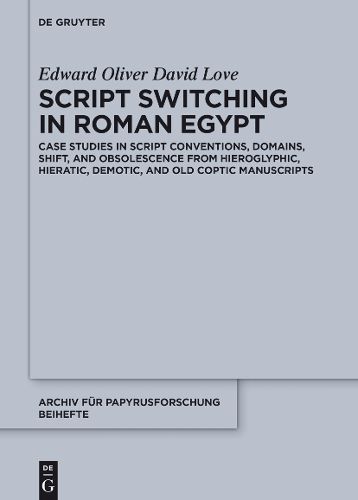Readings Newsletter
Become a Readings Member to make your shopping experience even easier.
Sign in or sign up for free!
You’re not far away from qualifying for FREE standard shipping within Australia
You’ve qualified for FREE standard shipping within Australia
The cart is loading…






Script Switching in Roman Egypt studies the hieroglyphic, hieratic, demotic, and Old Coptic manuscripts which evidence the conventions governing script use, the domains of writing those scripts inhabited, and the shift of scripts between those domains, to elucidate the obsolescence of those scripts from their domains during the Roman Period. Utilising macro-level frameworks from sociolinguistics, the textual culture from four sites is contextualised within the priestly communities of speech, script, and practice that produced them. Utilising micro-level frameworks from linguistics, both the scripts of the Egyptian writing system written, and the way the orthographic methods fundamental to those scripts changed, are typologised. This study also treats the way in which morphographic and alphabetic orthographies are deciphered and understood by the reading brain, and how changes in spelling over time both resulted from and responded to dimensions of orthographic depth. Through a cross-cultural consideration of script obsolescence in Mesoamerica and Mesopotamia and by analogy to language death in speech communities, a model of domain-bydomain shift and obsolescence of the scripts of the Egyptian writing system is proposed.
$9.00 standard shipping within Australia
FREE standard shipping within Australia for orders over $100.00
Express & International shipping calculated at checkout
Script Switching in Roman Egypt studies the hieroglyphic, hieratic, demotic, and Old Coptic manuscripts which evidence the conventions governing script use, the domains of writing those scripts inhabited, and the shift of scripts between those domains, to elucidate the obsolescence of those scripts from their domains during the Roman Period. Utilising macro-level frameworks from sociolinguistics, the textual culture from four sites is contextualised within the priestly communities of speech, script, and practice that produced them. Utilising micro-level frameworks from linguistics, both the scripts of the Egyptian writing system written, and the way the orthographic methods fundamental to those scripts changed, are typologised. This study also treats the way in which morphographic and alphabetic orthographies are deciphered and understood by the reading brain, and how changes in spelling over time both resulted from and responded to dimensions of orthographic depth. Through a cross-cultural consideration of script obsolescence in Mesoamerica and Mesopotamia and by analogy to language death in speech communities, a model of domain-bydomain shift and obsolescence of the scripts of the Egyptian writing system is proposed.